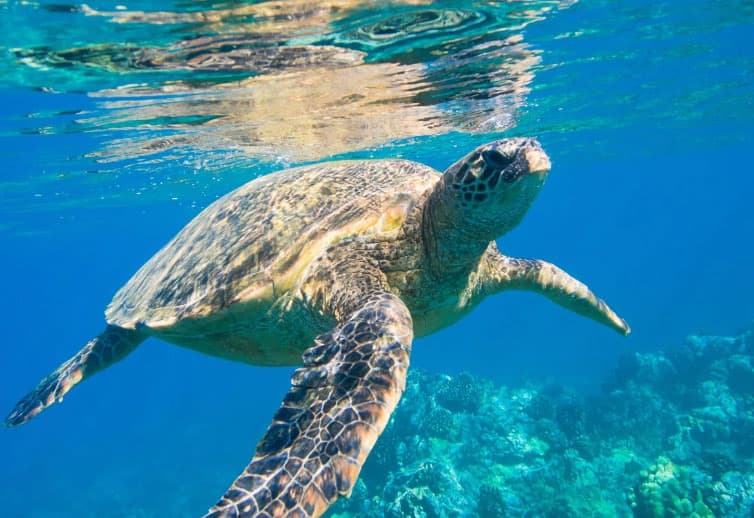Can Turtles Breathe Underwater? Exploring the Secrets of Turtle Respiration
Turtles are fascinating creatures, but one of the most common questions people ask is, “Can turtles breathe underwater?” Whether you’re curious about how turtles survive in the wild or you own one as a pet, understanding their unique respiratory system can be quite intriguing. In this article, we’ll dive deep into how turtles breathe, whether they can actually take in air underwater, and explore some of the surprising facts, like how some turtles can even “breathe” through their butts! Keep reading to uncover the secrets behind these extraordinary adaptations, and learn how long turtles can stay submerged before needing to come up for air.

How Do Turtles Breathe?
Turtles primarily rely on their lungs to breathe, taking in oxygen from the air through their nostrils, called nares. The inhaled air travels down the trachea and into their lungs, which are located under their shell and spine. However, unlike mammals, turtles cannot expand and contract their ribcages for breathing. Instead, they use special muscles within their shell to pump air in and out of their lungs.
In addition to lung breathing, certain turtle species, especially aquatic ones, have developed a unique adaptation called cloacal respiration. This process involves absorbing oxygen from the water through the cloaca, a multi-purpose opening at the rear of the body. This method allows turtles to stay submerged for extended periods, especially during hibernation, when their metabolism slows and their oxygen needs decrease.
Can Turtles Breathe Underwater?
Can turtles breathe underwater? The simple answer is no – but it’s more complicated than that. Turtles possess lungs, not gills, making them unable to breathe underwater like fish. However, they have developed extraordinary adaptations to stay submerged for extended periods.
Can Sea Turtles Breathe Underwater?
Sea turtles are often seen gliding gracefully through the ocean, and many wonder how they manage respiration. While sea turtles can’t breathe underwater, they can hold their breath for impressive durations. When active, sea turtles usually surface every 30 minutes for air, but while resting, they can stay underwater for up to 2 hours.
Sea turtles use a slow metabolism and large oxygen stores to maintain their stamina underwater. Their bloodstream can store higher volumes of oxygen, and their muscular adaptations allow them to use oxygen efficiently even when submerged.

Can Freshwater Turtles Breathe Underwater?
Freshwater turtles, such as painted turtles and snapping turtles, have equally fascinating ways to manage underwater respiration. They aren’t able to breathe underwater either, but they can absorb oxygen in a couple of unique ways:
Buccopharyngeal Respiration: Absorbing oxygen through the membranes of the mouth and throat.
Cloacal Respiration: Extracting oxygen from water through their cloaca.
These mechanisms provide limited oxygen exchange, enabling freshwater turtles to hibernate underwater during the winter. As their metabolism significantly slows down, these small amounts of oxygen are sufficient for survival.
Can Turtles Breathe Through Their Butts?
Indeed, some turtles can “breathe” through their butts, an intriguing phenomenon! This process is called cloacal respiration. The cloaca, an all-purpose cavity through which turtles excrete waste and lay eggs, has specialized structures that allow them to absorb oxygen from water.
During hibernation, especially in cold waters, this method enables turtles to survive months without surfacing.
It provides essential oxygen exchange, preventing hypoxia during extended submersion.
Variability in efficiency exists; painted turtles and snapping turtles are particularly adept at this method.
These remarkable adaptations emphasize the turtle’s evolutionary ingenuity to thrive in diverse environments.
How Long Can Sea Turtles Stay Underwater?
The ability of sea turtles to navigate extensive underwater journeys is astounding. Sea turtles can remain submerged for varying lengths of time depending on their activity level and species:
Resting: They can stay underwater for up to 2 hours.
Active Swimming: Usually surface every 30 minutes for a breath.
Diving: Divers can go around 45 minutes before needing air.
Several factors influence their underwater endurance:
Oxygen Storage: Enhanced capabilities allow more oxygen to be stored in blood and muscles.
Efficient Use: Slow metabolism and muscular adaptations ensure the economical use of oxygen.
Temperature: Colder water can elongate the duration they can hold their breath.
Understanding these characteristics provides a glimpse into how these marine marvels are perfectly adapted for ocean life.
Conclusion
Turtles are extraordinary creatures with unique respiratory systems and is impressive. Although they can’t breathe underwater like fish, their adaptive traits allow them to thrive in a variety of environments. From sea turtles’ extended dives to freshwater turtles’ butt-breathing capabilities, their respiration methods are a testament to evolution’s amazing ingenuity.
FAQ
Do Turtles Have Lungs or Gills?
Turtles have lungs, not gills. They need to surface for air but have adaptations that allow them to stay underwater for extended periods.
How Do Turtles Breathe in the Winter?
In winter, many freshwater turtles hibernate underwater and use cloacal respiration, absorbing oxygen through their cloacas to survive long periods without surfacing.
Can Turtles Breathe Underwater in the Ocean?
Turtles can’t breathe underwater in the ocean. They must surface for air but can hold their breath for hours, especially when resting or sleeping.
